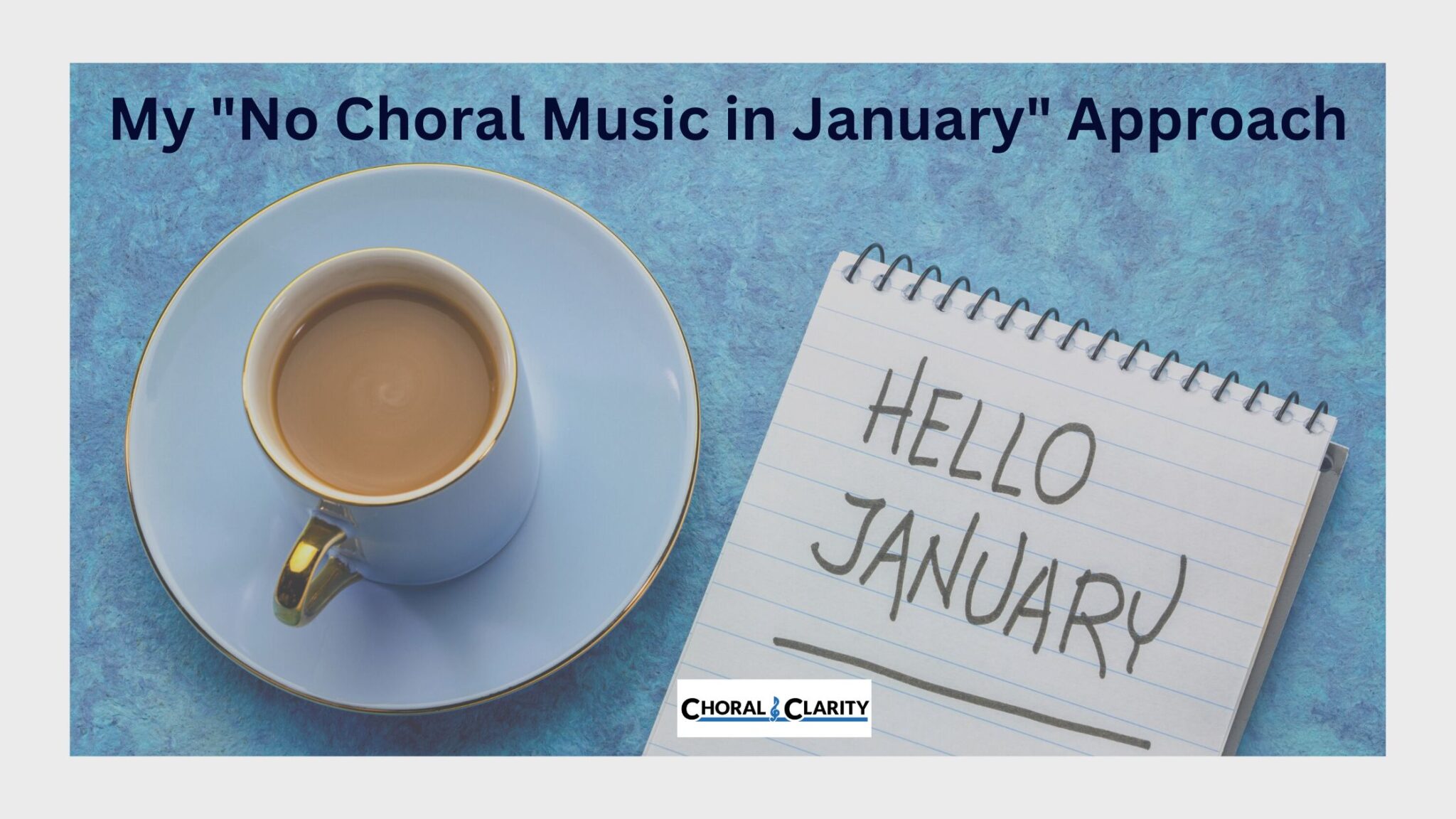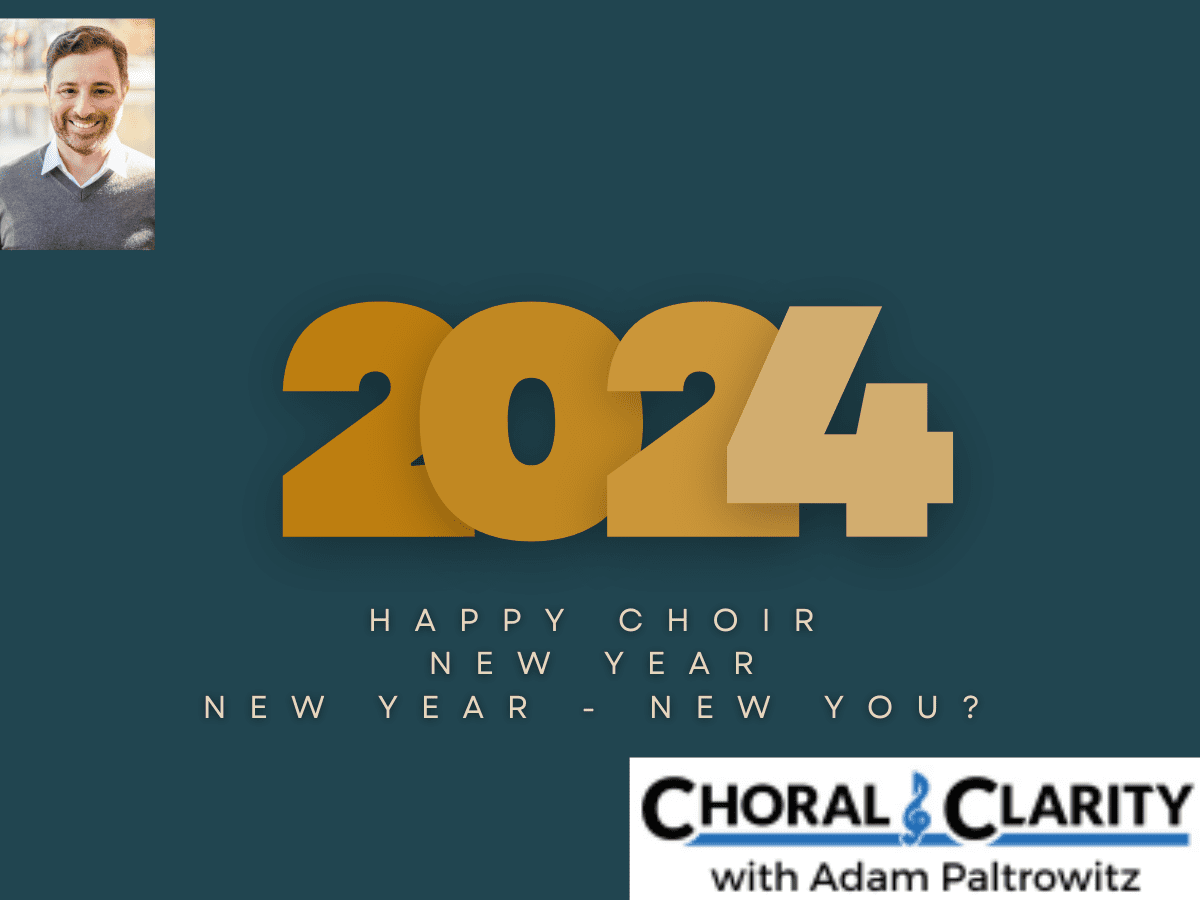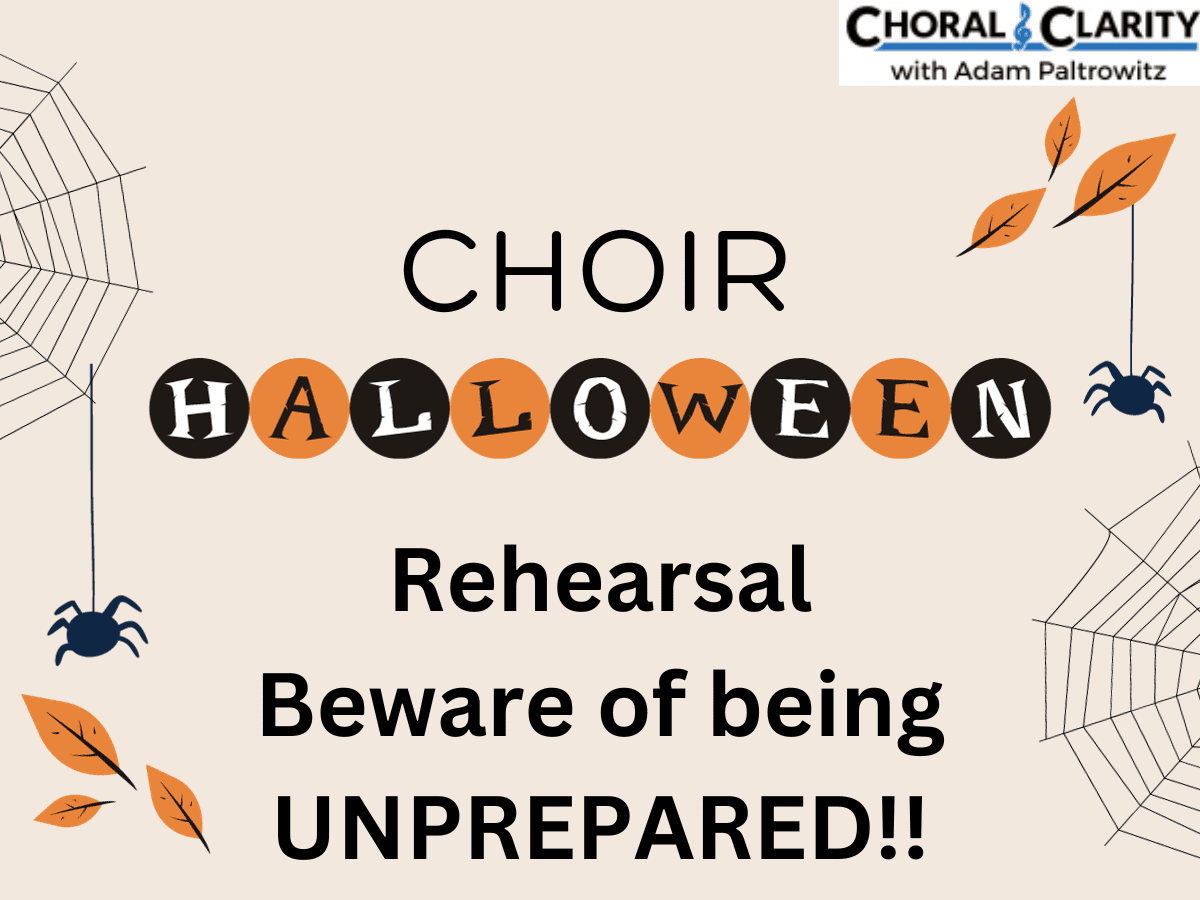When meeting students where they are, some choral directors make a big mistake: they keep the students where they are.
Here’s my current middle school chorus journey
For the first time in over 20 years, in addition to teaching high school chorus, I’m also teaching middle school chorus.
I was excited about the opportunity to work with 50% of my high school feeder system; we have two middle schools that feed into our one high school. For the first time, I would be in control of the program that could potentially produce half of my high school choir students.
When I started the year, I began by introducing sight-singing and traditional choral music. I quickly realized my tiny group of fifteen 7th and 8th graders weren’t connecting to this approach. They sounded like mice and looked like deer caught in the headlights.
Even though I am a huge proponent of music literacy, this was not the familiar place of where these chorus students currently were.
I began to realize that I needed to “meet them where they were.”
Meeting them where they are
I will repeat my opening statement:
When meeting students where they are, some choral directors make a big mistake: they keep the students where they are.
It is really important to understand the desires of the students. In this case, my students did not desire sight-singing and they certainly didn’t desire reading traditional choral music. In fact, the physical room itself wasn’t naturally conducive to this typical rehearsal structure; we rehearsed in the auditorium and had no whiteboard/smart board. Also, there was no place to store sheet music.
I observed my new students responded really well to two things:
- rote teaching (no sheet music at all)
- songs that they suggest (Disney music)
Before I go any further, I want to explain that this is the entry point, not the conclusion. Finding their meeting point is only step one. Our long-term goal is to move them from the known to the unknown.
What about music literacy?
I firmly believe developing the ear is the first part of developing music literacy. When teaching appropriate music by rote, students develop their aural training skills. I taught my students six pieces by rote: Siyahamba, Jubilate Deo Round, The Storm Is Passing Over, Oh Hanukkah, and an improvised version of A Whole New World and Silver Bells. I taught Hakuna Matata using sheet music.
As a result of this approach, the students were engaged with eye contact the majority of the time. They were focused on vocal technique, and singing with confidence.
When the concert arrived, my small but mighty group sang 7 pieces. In most pieces, we sang sections a-cappella in 3 parts.
Save 15% of the most intuitive music notation program on the market
But what about Sight-Singing and Reading?
Throughout this time, I gave a weekly homework assignment through Sight Reading Factory. I taught the students how to use Sight Reading Factory in class. From there, they had 1 assignment per week. The students would access the assignment through Google Classroom.
For each weekly homework assignment, the students:
- were able to choose the level of difficult they wanted. Since I’m in New York, I used the NYSSMA Levels.
- could complete as few or as many attempts as they wished
- would receive full credit just for submitting an attempt
This approach allowed for as minimal effort as desired, but still allowed motivated students to progress.
Try SIGHT READING FACTORY and save 10% using code: choralclarity
Fast Forward to Post Concert
Once the concert ended, it was time to build upon their successes. The students sang more confidently. It was time to move forward.
At this point in time, the students had completed 10 sight-singing homework assignments. Now it was time to bring this skill into the rehearsal. I was shocked that within three class periods, the students were successfully singing NYSSMA Level 4 (of 6).
In addition, I began teaching solo repertoire, an approach I use every year in the high school. Here, I handed out two pieces, one was Tu Lo Sai, from the 24 Italian Aria book.
It was amazing to see the students reading the sheet music, singing out, and enjoying it. This is not something that would have happened in September.
From the Known to the Unknown
Students have a voice in their choir. I want them to have a say in repertoire we sing. With that said, I have the ultimate say. I will choose songs they want as that is part of meeting them where they are at.
It is my responsibility to take them somewhere new. That somewhere new doesn’t mean we eliminate their desires. It means, we expand their palette.
While I haven’t fully planned my spring concert yet, I will likely have 2 selections that they request, 1 unison Italian Aria, and several choral selections that demonstrate the beauty of ensemble singing. I will likely teach 1-2 songs by rote, and the rest will be read.
The Reward
I can already see the reward for meeting students where they were. The students are engaged, focused, and willing to come with me on a journey. I’ve allowed them to take their favorite stuffed animals with them (their pop tunes). My ultimate goal is for my students to:
- love chorus
- continue to progress musically
- continue with chorus in the high school
How “Meeting Students Where They Are” Can FAIL….
Meeting students where they are can fail when:
1. Teachers mistake this with lack of discipline
Students need order and organization in a classroom. There need to be effective guidelines and routines. We need to be in control of our classroom. It’s never too late to turn around our classroom.
2. Teachers aren’t intending to take their students on a journey
We meet students where they are but that’s the entry point, not the destination. If they don’t like to sight-sing, that doesn’t mean we shouldn’t sight-sing. If they don’t like Mozart, that doesn’t mean we shouldn’t expose them to Mozart. Our job is to get them to the point of developing and appreciating more advanced skills and repertoire.
DOWNLOAD FOR FREE!













Leave A Comment